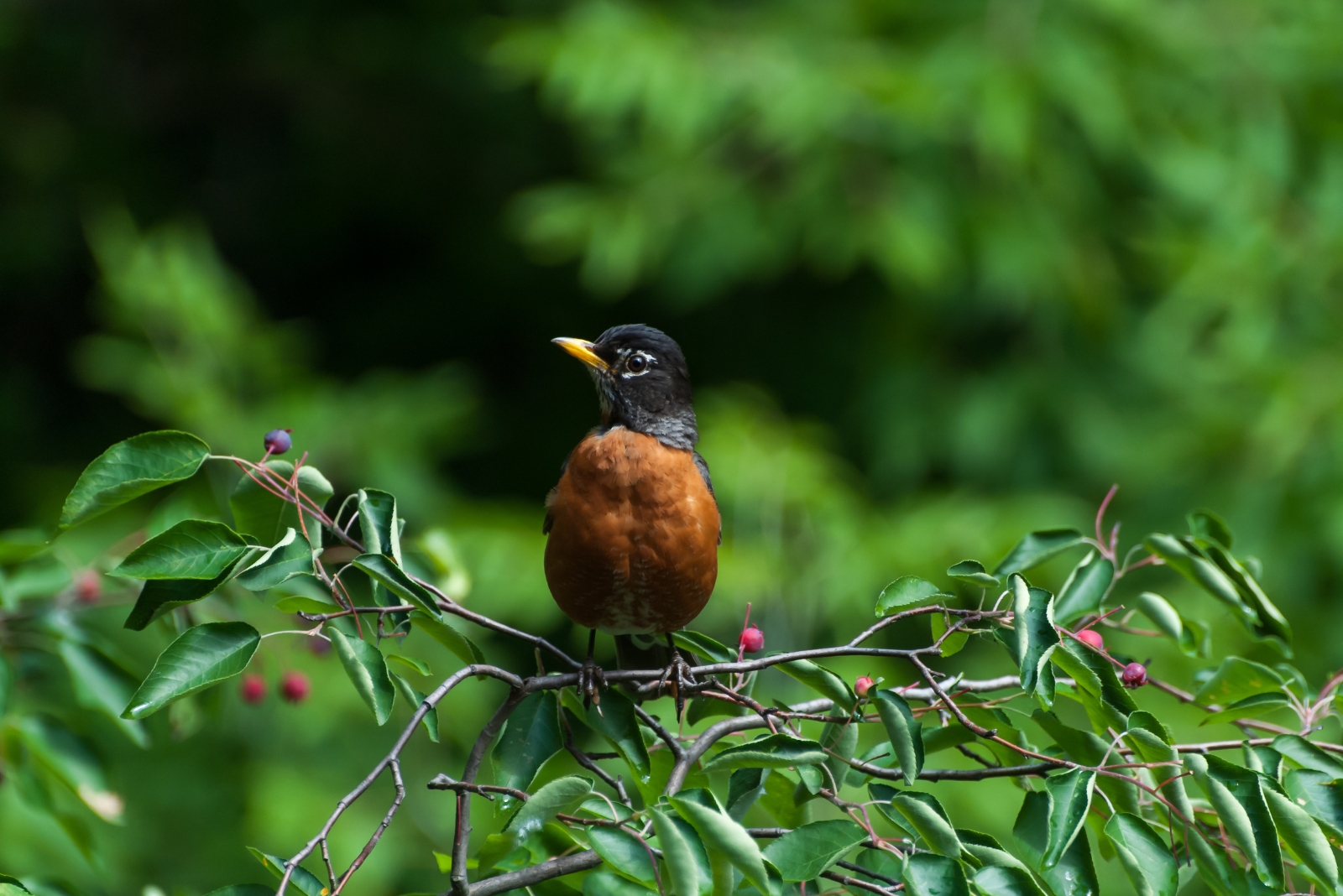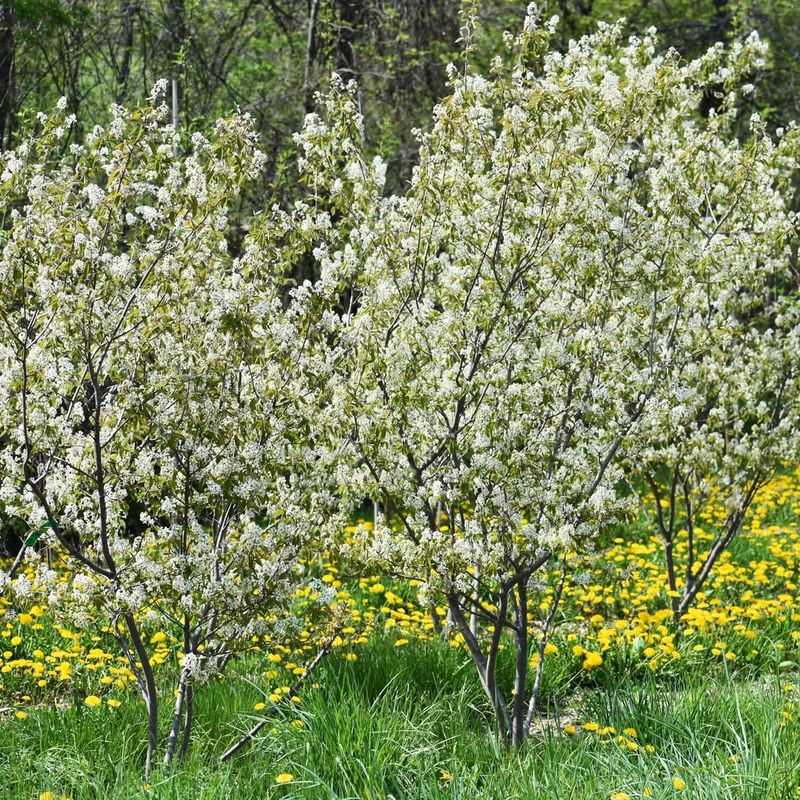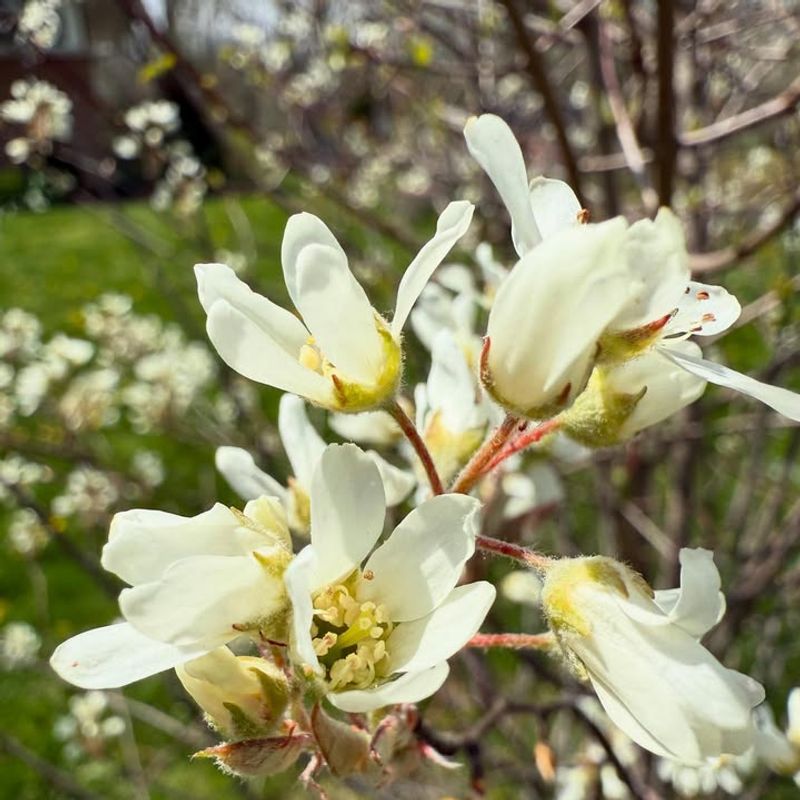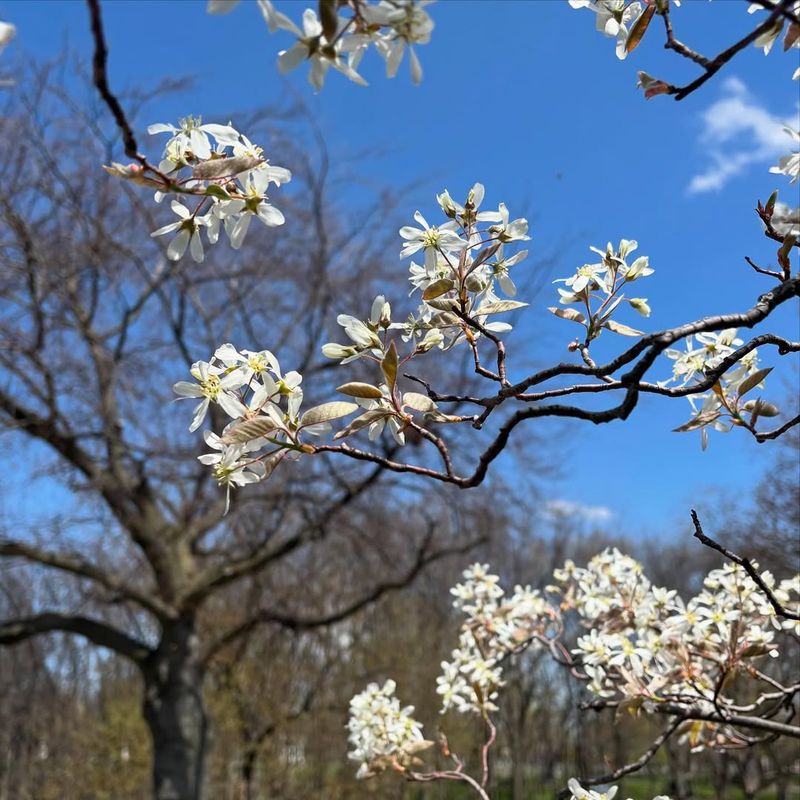North Carolina gardeners know the secret to attracting beautiful robins to their yards all year long: planting serviceberry trees. These native trees offer everything robins need, from tasty berries to safe nesting spots.
When you add a serviceberry to your garden, you create a natural haven that keeps these cheerful birds coming back season after season.
1. Berries Provide A Year-Round Food Source
Robins absolutely love snacking on serviceberries, especially during spring and early summer when the fruit ripens in North Carolina. The sweet, juicy berries are packed with nutrients that give robins the energy they need for nesting and raising their babies.
Serviceberry trees produce abundant fruit that ripens in waves, meaning robins can feast for weeks instead of just a few days. Even after fresh berries are gone, robins remember where they found food and return to check for insects around the tree throughout fall and winter.
2. Native Trees Support Local Wildlife Ecosystems
Planting native serviceberry trees helps the entire backyard ecosystem thrive, not just robins. Native plants evolved alongside local birds and insects, creating perfect partnerships that benefit everyone involved.
Serviceberries attract caterpillars and other insects that robins feed to their chicks during breeding season. When you choose native plants, you support the natural food web that keeps robin populations healthy. Plus, native trees require less maintenance since they already adapted to North Carolina’s climate and soil conditions perfectly.
3. Dense Branches Offer Safe Nesting Locations
Robins search for secure spots to build their nests, and serviceberry trees deliver exactly what they need. The branching structure provides sturdy support while the leafy canopy hides nests from predators like hawks and cats.
Many North Carolina gardeners report finding robin nests tucked safely in their serviceberry trees year after year. The trees grow to a manageable height of fifteen to twenty-five feet, making them ideal for suburban yards. Robins appreciate having multiple branch options at different heights for building their mud-and-grass homes.
4. Spring Blooms Attract Insects Robins Hunt
Before berries appear, serviceberry trees burst into clouds of delicate white flowers each spring in North Carolina. Those blossoms work like magnets for bees, flies, and other insects that robins hunt to feed their growing families.
Early spring can be tough for robins since earthworms hide deep underground when soil temperatures drop. Serviceberry blooms create an insect buffet right when robins need it most for their first broods. Smart gardeners know that planting serviceberries means providing robins with protein-rich food during critical breeding season.
5. Four-Season Interest Keeps Birds Visiting
Serviceberry trees look beautiful during every season, which keeps robins interested in your North Carolina yard all year long. Spring brings snowy white blooms, summer offers purple berries and lush green leaves, and fall displays brilliant orange and red foliage.
Even winter has its charm when bare branches reveal interesting bark patterns and persistent berries. Robins patrol serviceberry trees during winter months searching for leftover dried fruit and sheltering insects. By planting serviceberries, you create a landmark that robins recognize and visit throughout changing seasons.
6. Low Maintenance Requirements Save Time And Effort
Busy gardeners appreciate that serviceberry trees practically take care of themselves once established. These tough native trees resist most diseases and pests without needing chemical sprays that could harm visiting robins.
Serviceberries tolerate various soil types and handle North Carolina’s occasional droughts better than many ornamental trees. You won’t spend weekends fussing over fertilizer schedules or complicated pruning routines. Instead, you can relax and watch robins enjoy the natural habitat you created with minimal effort. That’s a win for both you and the birds!







